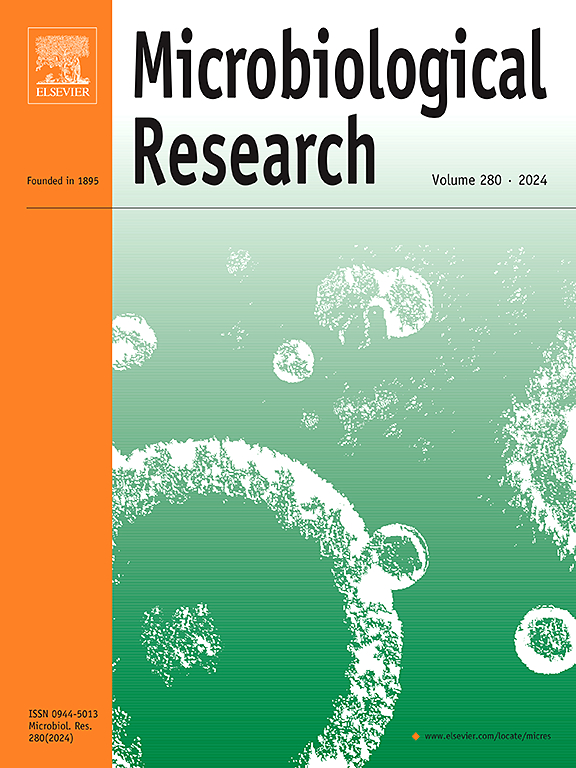There and back again: Genomic insights into microbial life in a recirculating petroleum refinery wastewater biotreatment system
IF 6.9
1区 生物学
Q1 MICROBIOLOGY
引用次数: 0
Abstract
Petroleum refinery wastewater biotreatment relies on microbes to remediate carbon, nitrogen, and sulfur compounds, yet their life strategies and ecological roles remain unclear. This study characterises the ecological functions of 20 metagenome-assembled genomes (MAGs) from a full-scale petroleum refinery wastewater treatment plant in southern China. The taxonomic identity, nutrient metabolism genes (including C/N/S cycling), carbohydrate-active enzymes, and CRISPR-Cas systems of these MAGs were analysed. The recovered MAGs represented bacteria primarily from the Pseudomonadota and Bacteroidota phyla. The major carbon sources for the represented organisms are likely aromatic and aliphatic compounds, as well as carbohydrates including peptidoglycan, chitin, and starch. Almost all MAGs contained genes for nitrate or nitrite reduction, while metabolic pathways for sulfur metabolism were generally less prevalent. Meiothermus sp. bin.89 was the most metabolically versatile MAG. This organism possessed genes that allowed it to recycle biomass, break down aliphatic and monoaromatic compounds, and perform anaerobic respiration using nitrate. However, it was likely the most susceptible to viral predation, as indicated by the high abundance of CRISPR spacers. Overall, the results revealed that stress-tolerant ecological traits were common among organisms in this microbiome, showcasing the ability of the microbes to obtain carbon from aromatic and aliphatic compounds. This study provides a substantial contribution towards future efforts in optimising microbiome stability for pollutant removal in petroleum refinery wastewater biotreatment systems.
再来再来:在循环石油炼制废水生物处理系统中对微生物生命的基因组见解
石油炼化废水的生物处理依赖于微生物修复碳、氮和硫化合物,但它们的生命策略和生态作用尚不清楚。本研究分析了来自中国南方某炼油厂污水处理厂的20个宏基因组组装基因组(MAGs)的生态功能。分析了这些mag的分类特性、营养代谢基因(包括C/N/S循环)、碳水化合物活性酶和CRISPR-Cas系统。回收的MAGs主要代表来自假单胞菌门和拟杆菌门的细菌。所代表的生物的主要碳源可能是芳香和脂肪族化合物,以及碳水化合物,包括肽聚糖、几丁质和淀粉。几乎所有的mag都含有硝酸盐或亚硝酸盐还原的基因,而硫代谢的代谢途径通常不太普遍。微热菌属。89是代谢功能最广泛的MAG。这种生物拥有的基因使其能够回收生物质,分解脂肪族和单芳香化合物,并利用硝酸盐进行厌氧呼吸。然而,正如CRISPR间隔物的高丰度所表明的那样,它可能是最容易受到病毒捕食的。总体而言,结果表明,该微生物组中的生物具有耐应力生态特性,表明微生物能够从芳香族和脂肪族化合物中获取碳。该研究为未来优化微生物稳定性以去除石油炼制废水生物处理系统中的污染物提供了实质性的贡献。
本文章由计算机程序翻译,如有差异,请以英文原文为准。
求助全文
约1分钟内获得全文
求助全文
来源期刊

Microbiological research
生物-微生物学
CiteScore
10.90
自引率
6.00%
发文量
249
审稿时长
29 days
期刊介绍:
Microbiological Research is devoted to publishing reports on prokaryotic and eukaryotic microorganisms such as yeasts, fungi, bacteria, archaea, and protozoa. Research on interactions between pathogenic microorganisms and their environment or hosts are also covered.
 求助内容:
求助内容: 应助结果提醒方式:
应助结果提醒方式:


